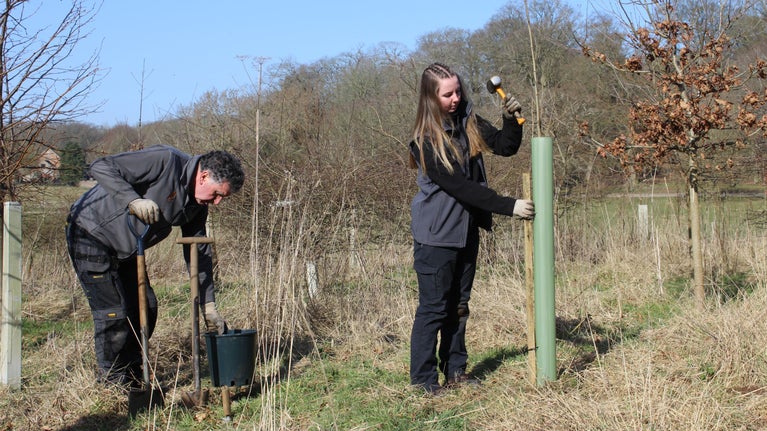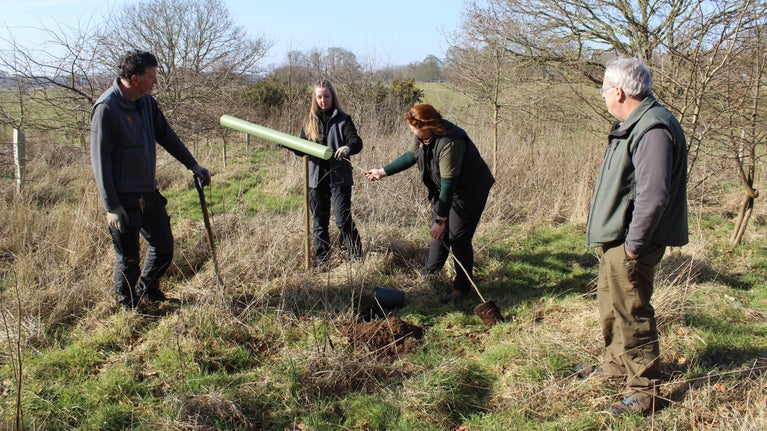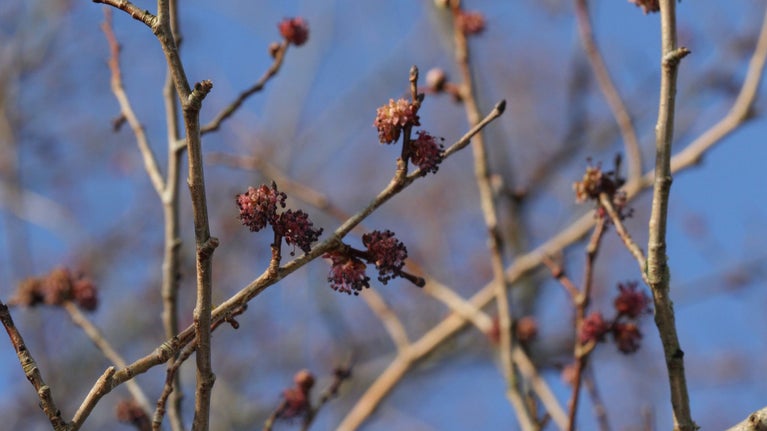
Nature conservation
From ancient trees to bees and butterflies, the places in our care are full of life. Find out what we're doing to safeguard nature for years to come.

100 Dutch elm disease resistant trees have been planted to restore a lost landscape and improve biodiversity across three National Trust sites in Norfolk. 90% of Britain’s elm trees have been lost to this disease since the 1970s, that’s an estimated 25 million trees. Mature English elms are one of the tree species that support the greatest variety of wildlife, including over 80 insect species and 180 lichen species.
Dutch Elm Disease[1] has been one of the most destructive tree diseases of the 20th century. Before the decimation of the British elm population, they were the second most important broadleaf timber tree in Britain after oak.
In the 1970s, a catastrophic outbreak of the fungus, Ophiostoma novo-ulmi, killed 90% of British elms, an estimated 25 million elm trees, which can support over 80 insect and 180 lichen species.
Now, the National Trust has planted 100 trees that are resistant to the disease.
Ulmus Lutece and Ulmus Wingham, has been planted by the conservation charity at Blickling Estate, Felbrigg Estate and Sheringham Park, where elm trees have been lost. This work has been made possible thanks to a grant from Forestry England, through Norfolk County Council.
Richard Daplyn, Countryside Manager for the National Trust’s Felbrigg Estate and Sheringham Park said:
“Elm trees were once giants of the landscape, standing high above the hedgerows at well over 30 metres or more. The interlocking grain in their wood made them a valuable water-resistant timber used in buildings, ships, coffins and even early water pipes.
“Elm trees used to be planted as way-markers by farmers at the boundaries of land as they are very visible in the landscape. They also featured in paintings by great landscape painters such as John Constable.
“It’s hoped that the trees we’re planting will be resistant to Dutch elm disease, cross-bred with different cultivars and versions of British elm trees, helping them become the landscape defining trees of the future, inspiring the budding Constables of tomorrow.”
Only a few islands of mature elms remain, near Brighton in East Sussex, where Dutch elm disease hasn’t taken hold. For generations, they will have grown up without seeing a mature elm tree in the landscape.
It grows in hedgerows and sends up many suckers to form lines of trees. The tree can be identified by its rough surfaced dark green leaves, which have one side longer at the base.

Stuart Banks, Trees and Woodland Adviser for the National Trust, added:
“The National Trust is committed to increasing the tree cover on the land in our care as part of an ambition to reach carbon neutrality by 2030. This involves planting 20 million trees.
“The benefits for wildlife as well as the farmed environment are huge; trees help to slow the flow of water across land and lessen the impact of wind on farmland soils, both of which help to keep rivers clean. The insects that thrive on trees in hedgerows help to pollinate the crops in fields and these in turn provide food for birds and small mammals. If woodlands are the lungs of the countryside, hedgerows are the arteries!”
It's hoped that the newly planted trees will not only restore a landscape but improve biodiversity. The rare white letter hairstreak butterfly, whose caterpillars depend entirely on elm trees to survive, has also been decimated by Dutch elm disease. The hope is that these newly planted trees will be in time to help boost the small remnant population in Norfolk.
Sydney Mielsch, a National Trust apprentice, who has been working on National Trust’s Riverlands project [2], to restore the Upper Bure and its catchment across Blickling and Felbrigg Estates, has been helping to plant the specially cultivated trees.
She said: “I applied for the National Trust’s apprenticeship scheme, as I wanted to gain practical skills and knowledge in working with the environment. I have loved working alongside a very knowledgeable team, helping to protect nature for the future. Every day is different. And this project gives us all a little hope.”
The Dutch elm disease resistant trees, Ulmus Lutece and Ulmus Wingham, have been supplied by Frank P Matthews in Worcestershire and are certified by the Butterfly Conservation charity.
[1] Dutch elm disease - Wikipedia
[2] The National Trust is working with the Environment Agency to improve the health of the River Bure. Restoring the River Bure | Norfolk | National Trust


From ancient trees to bees and butterflies, the places in our care are full of life. Find out what we're doing to safeguard nature for years to come.